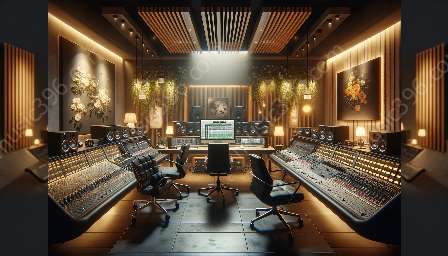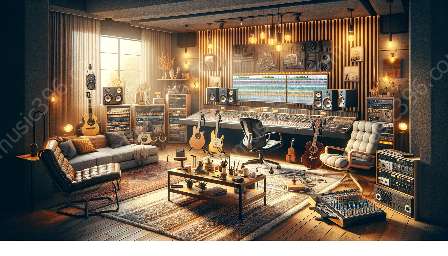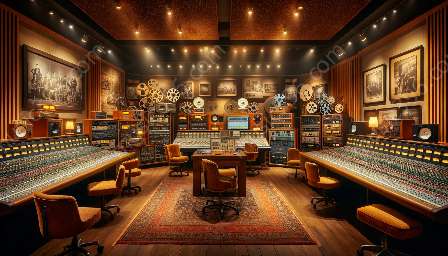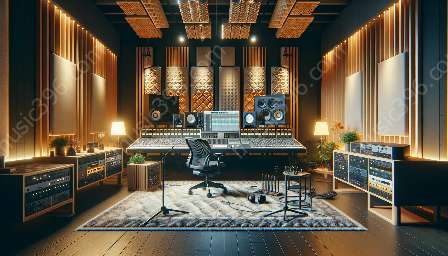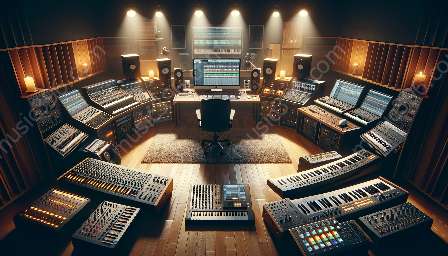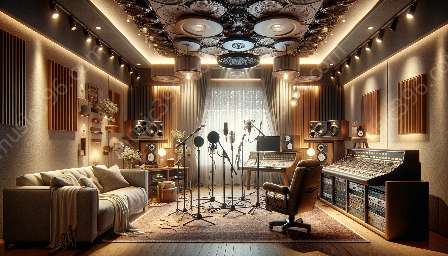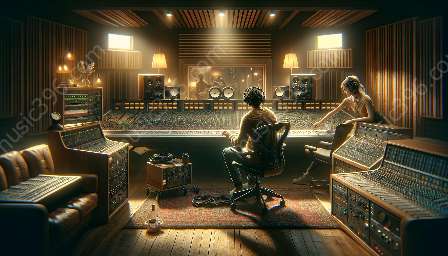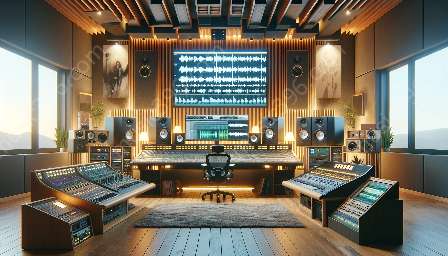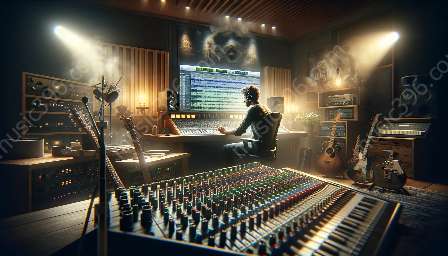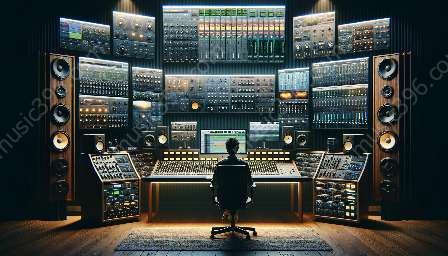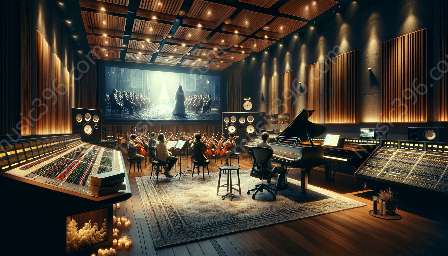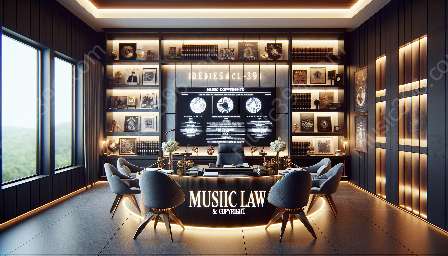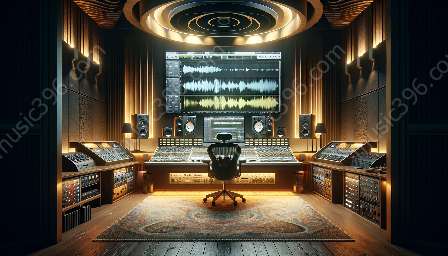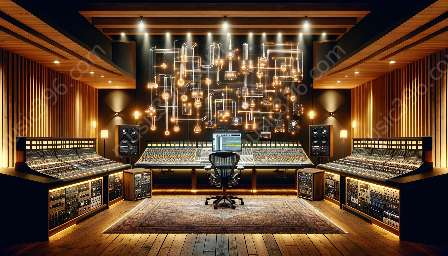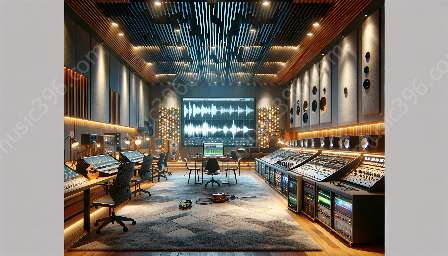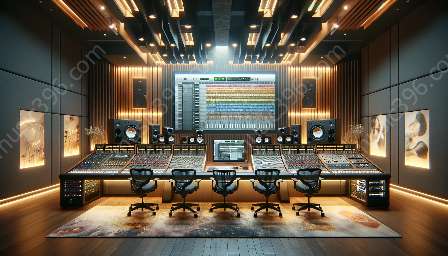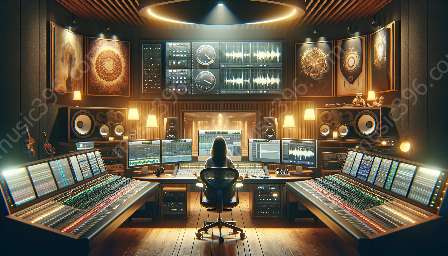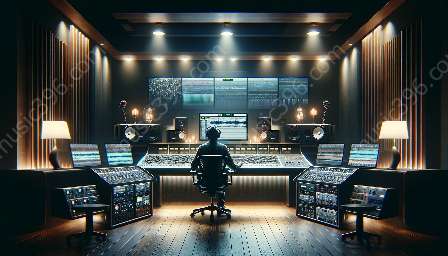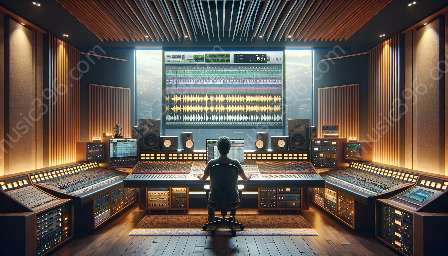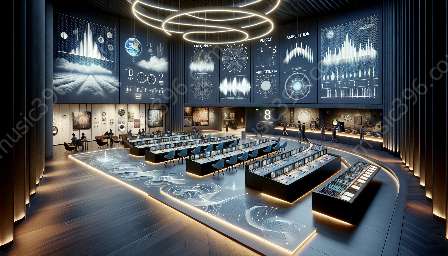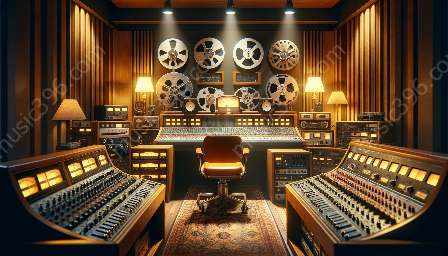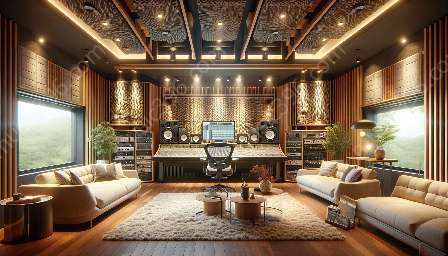Music production involves a range of techniques to create professional and captivating sounds. Loop recording and overdubbing are essential methods used for adding layers and depth to musical compositions. These techniques are integral to the music recording and audio engineering processes, allowing artists to experiment and innovate with their sound.
Understanding Loop Recording
Loop recording is a fundamental technique that enables musicians to capture and repeat musical phrases or sections seamlessly. It involves recording a segment of music and playing it back in a continuous loop, allowing the musician to overlay new parts on top of the existing loop. This method is often used to create rhythmic patterns, melodic sequences, or harmonic layers that form the foundation of a composition.
Modern music production software and hardware offer extensive loop recording capabilities, allowing musicians to refine their performances and explore new musical ideas with ease. The use of digital audio workstations (DAWs) has significantly expanded the possibilities of loop recording, providing tools for precise editing, synchronization, and manipulation of recorded loops.
The Advantages of Loop Recording
Loop recording offers several advantages for music producers and recording artists:
- Enhanced Creativity: By enabling musicians to iterate and build upon musical ideas, loop recording fosters creativity and experimentation in the studio. Artists can quickly explore different musical arrangements and variations within a composition.
- Seamless Composition: The ability to seamlessly layer and repeat musical phrases allows for the creation of cohesive and dynamic compositions. This feature is particularly valuable in electronic music genres and live performance settings.
- Precise Editing: Through the use of DAWs and other recording software, musicians can meticulously edit and manipulate recorded loops, ensuring precise timing, pitch correction, and sonic enhancements.
- Efficient Workflow: Loop recording streamlines the recording process by facilitating efficient takes and reducing the need for continuous re-recording of entire performances.
Exploring Overdubbing
Overdubbing is a technique that involves layering additional audio tracks onto an existing recording. It allows musicians to add supplementary instrumental or vocal parts, harmonies, or embellishments to a composition, enriching the sonic texture of the music. Overdubbing is commonly used in studio recordings to build intricate arrangements and to achieve multi-layered soundscapes.
With the advent of multitrack recording technology, overdubbing has become an integral part of the music production process. Musicians can record multiple takes and overdubs, layering diverse musical elements to create a full and immersive sonic experience.
The Benefits of Overdubbing
Overdubbing offers a range of benefits for music recording and production:
- Enhanced Musical Depth: By adding layers of instrumentation and vocals, overdubbing enriches the depth and complexity of musical compositions, elevating the overall sonic impact of the music.
- Creative Experimentation: Musicians can freely experiment with different instrumental combinations and vocal arrangements, exploring diverse creative possibilities during the production process.
- Artistic Control: Overdubbing provides artists with precise control over the recording process, allowing for meticulous adjustments and enhancements to individual tracks without affecting the original performance.
- Dynamic Soundscapes: Through the strategic layering of overdubs, music producers craft dynamic and engaging soundscapes that captivate listeners and convey a sense of depth and vitality.
Integration in Music Recording and Audio Engineering
Both loop recording and overdubbing play integral roles in modern music recording and audio engineering. These techniques are widely employed in various genres of music, from pop and rock to electronic and experimental genres. The seamless integration of loop recording and overdubbing in the recording and production processes has redefined the creative possibilities available to musicians and producers, enabling the development of unique and immersive musical experiences.
Moreover, advancements in digital recording technology and the accessibility of high-quality recording equipment have democratized the use of loop recording and overdubbing, empowering artists at all levels to craft professional-quality productions.
Conclusion
Loop recording and overdubbing are invaluable tools for music production, fostering creativity, enabling experimentation, and shaping the sonic landscape of contemporary music. By harnessing these techniques, artists and producers can realize their musical vision and deliver captivating compositions that resonate with audiences worldwide.
Topic
Advantages and Disadvantages of Loop Recording in Music Production
View details
Technological Evolution and Innovations in Loop Recording
View details
Integration of Loop Recording in Different Music Genres
View details
Musical Composition and Loop Recording Applications
View details
Seamless Transitions and Arrangements with Loop Recording
View details
Ethical and Psychological Considerations in Loop Recording
View details
Loop Recording in Live Performance and Audience Engagement
View details
Loop Recording and Collaborative Music Creation
View details
Loop Recording and Sound Design in Multimedia Productions
View details
Crossover with Electronic Music Production Techniques
View details
Loop Recording in Traditional and Contemporary Music Fusion
View details
Impact of Loop Recording on Music Democratization
View details
Loop Recording and Affordability for Independent Artists
View details
Educational Implications and Pedagogy of Loop Recording
View details
Loop Recording and Audio Production in Popular Culture and Media
View details
Therapeutic Potential of Loop Recording in Musical Expression
View details
Preservation of Cultural Music Heritage through Loop Recording
View details
Environmental Sustainability and Loop Recording Practices
View details
Legal and Copyright Considerations in Loop Recording
View details
Immersive Audio Experiences with Loop Recording
View details
Continuous Learning and Skill Development in Music Production
View details
Questions
Explain the concept of loop recording and its importance in music production.
View details
What are the advantages of using loop recording in creating music?
View details
How does loop recording contribute to the creative process of music composition?
View details
Discuss the role of loop recording in enhancing the efficiency of music production.
View details
What are the challenges associated with loop recording and how can they be overcome?
View details
Examine the impact of loop recording on the quality and authenticity of music compositions.
View details
How does loop recording influence the experimentation and exploration of musical ideas?
View details
Discuss the evolution of loop recording technology and its effects on modern music production.
View details
Analyze the integration of loop recording techniques in different genres of music.
View details
Explain the relationship between loop recording and the development of musical motifs and themes.
View details
What role does loop recording play in creating seamless transitions and arrangements within a music track?
View details
Discuss the ethical considerations surrounding the use of loop recording in music production.
View details
What are the psychological and cognitive aspects involved in the practice of loop recording for musicians?
View details
How has loop recording influenced the workflow and productivity of music producers and artists?
View details
Examine the influence of loop recording on the improvisation and spontaneity of musical performances.
View details
What are the potential future advancements in loop recording technology and their implications for music production?
View details
Discuss the role of loop recording in live music performance and its impact on audience engagement.
View details
Explain the connection between loop recording and the concept of layering in music composition.
View details
How has loop recording revolutionized the concept of creating music collaboratively?
View details
Analyze the relationship between loop recording and the preservation of musical ideas and inspirations.
View details
Discuss the integration of loop recording techniques in sound design for film and multimedia productions.
View details
Examine the crossover between loop recording and electronic music production techniques.
View details
What role does loop recording play in the fusion of traditional and contemporary music styles?
View details
Discuss the impact of loop recording on the democratization of music creation and distribution.
View details
Explain the influence of loop recording on the accessibility and affordability of music production for independent artists.
View details
What are the implications of loop recording for music education and pedagogy?
View details
Analyze the relationship between loop recording and the concept of musical loops in popular culture and media.
View details
Discuss the potential therapeutic benefits of loop recording for individuals engaged in musical expression.
View details
Examine the role of loop recording in preserving and showcasing traditional cultural music and heritage.
View details
What are the environmental implications of loop recording in reducing the need for physical recording resources?
View details
Discuss the legal and copyright considerations associated with loop recording and music production.
View details
Explain the role of loop recording in creating immersive and spatial audio experiences in virtual reality and gaming contexts.
View details
How does loop recording contribute to the concept of continuous learning and skill development in music production?
View details



